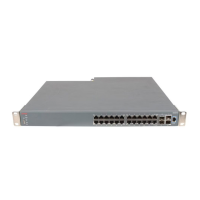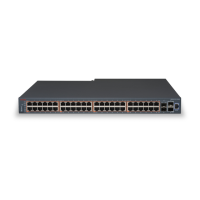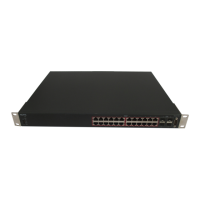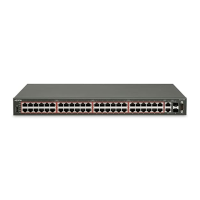Note:
If you download an ASCII file or diag/image with an Ip.cfg file, the specific ASCII file or diag/
image must be present on the usb device.
The ip.cfg file loads information from the ASCII configuration file in order of precedence. For
example, if you have an ip.cfg file with the following commands:
USBascii ip.txt
IP 181.30.30.113
Mask 255.255.255.0
Gateway 181.30.30.254
The stack IP becomes 181.30.30.113 no matter what IP address is in the ip.txt file.
If you have an ip.cfg file with the following commands:
IP 181.30.30.113
Mask 255.255.255.0
Gateway 181.30.30.254
USBascii ip.txt
The stack IP will be the IP address defined in the ip.txt file.
Note:
The ip.cfg file runs only on a base or stand-alone unit. The file cannot be more than 4096 bytes
or contain more than 200 lines.
The following figure shows an example of an ip.cfg file.
Figure 11: ip.cfg file example
If the ip.cfg file specifies an image or agent code, the switch loads the software, even if the same
version is already installed on the switch. Ensuring that the appropriate software is always upgraded
on the units is the correct operation of ip.cfg.
Use the factory default command to reset the switch to the factory default after you insert the USB
memory device in the USB port. The USB memory device must contain the properly formatted ip.cfg
file in the root directory.
Installing the Avaya Ethernet Routing Switch
August 2016 Installing Avaya ERS 4800 Series 32
Comments on this document? infodev@avaya.com

